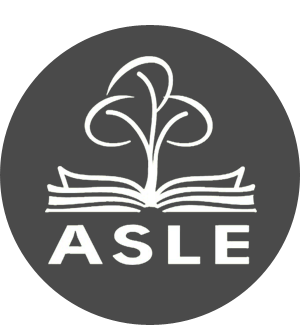Deadline: December 1st
Contact: Isabel Lane
Email: ilane@fas.harvard.edu
Panel proposed for ASLE 2025: Collective Atmospheres
University of Maryland, College Park, MD
July 8-11, 2025
“The Same Air, Water, and Hope”: Environmental Narratives Through the Razor Wire
In his 1989 essay “A Toxic Shock,” imprisoned activist and journalist Mumia Abu-Jamal writes, “Despite the legal illusions erected by the system to divide and separate life, we the caged share the same air, water, and hope with you, the not-yet-caged. We share your same breath.” How can something as violently boundary-setting as razor wire still allow for the circulation of air, water, and hope?
Increased attention to carceral environments has recently led to the introduction of a federal resolution, The Declaration of Environmental Rights for Incarcerated People, “affirm[ing] the human right of nearly two million people currently incarcerated in the United States to a healthy and safe environment.” But scholars in sociology, geography, and critical carceral studies—as well as grassroots abolition and environmental justice groups—have long documented and explored the ways in which carceral geographies shape and respond to the lives and economies of people in and outside of prison, as well as the ways in which imprisoned populations are particularly vulnerable to environmental harms. Whether it be through dismantling the prison-industrial complex, penal reform, and carceral abolition, thinkers on both sides of the wall have looked for ways to document, rethink, and transform the carceral system as both a political and social system and as a physical environment.
While “prison literature” from the US and beyond is often studied as outsider art, testimony, or a genre unto itself, prison literatures have received relatively little attention from an ecocritical or environmental perspective. Ruth Wilson Gimore tells us that carceral abolition “has to be green, and in order to be green, it has to be red (anti-capitalist), and in order to be red, it has to be international.” The environmental humanities is well-positioned to explore the intersecting environmental and international “collective atmospheres” that unite a struggle against imprisonment and environmental injustice.
This panel invites green, red, and international engagements with carceral spaces through humanistic inquiry, pedagogy, and praxis. Of particular interest are papers that think seriously with Abu-Jamal’s formulation of the caged/no-yet-caged, exploring interpenetrations and opportunities for the air we breathe, water we drink, and hope we collectively cultivate across the razor wire.
Topics and perspectives might include:
– Abolition geographies (Gilmore) and abolition ecologies (Heynen and Ybarra) in the arts
– Global narratives of incarceration (prison writing and writing about prison)
– Air quality, wildfires, and incarceration in popular culture
– National border detention, ICE detention, migrant camps, and Gaza as an “open-air prison”
– “Stuckness” and parallels between different sites of confinement
– Data collection, oral history, and other opportunities for narrativizing incarceration and environment
– Official documents and carceral self-narration
– Black ecologies (Roane and Hosbey), Black geographies (McKittrick) and other connections between place, race, and carcerality
– Ecotage, ecoterrorism, and environmental protest and punishment
Please send proposals and inquiries to Isabel Lane (ilane@fas.harvard.edu) by December 1, 2024.
Posted on October 14, 2024
